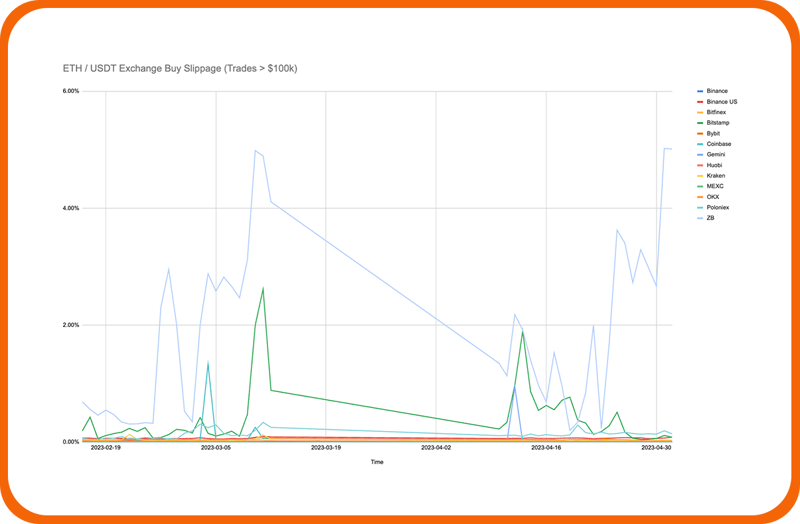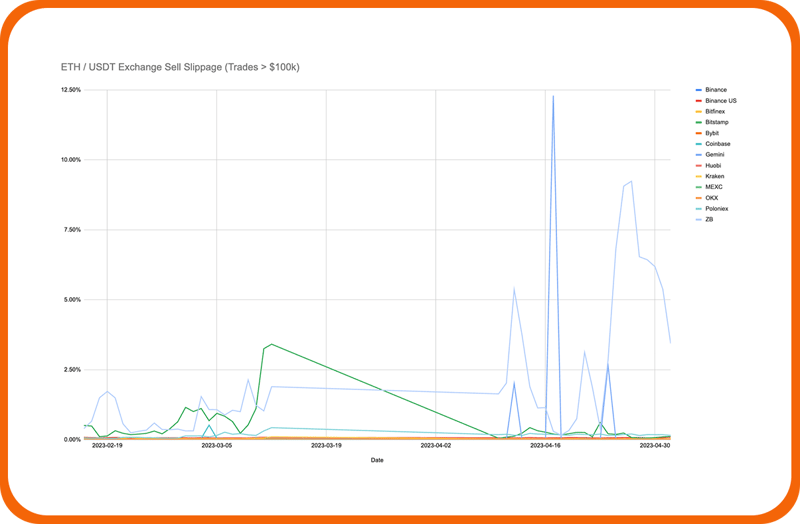Use Cases
Calculate Price Slippage
Simulating price slippage is inaccurate. Amberdata provides the raw data so you can calculate accurate slippage in order to:
- Understand the traded price, price impact, and full order book depth.
- Develop sophisticated algorithms for high-frequency trading.
- Avoid large losses in volatile markets.
Leverage Bid-Ask Spread
Calculate spread or market depth to:
-
Understand the liquidity of an asset or multiple trading pairs.
-
Develop profitable trading strategies around tight or large spreads.
-
Determine the fair market value of a cryptocurrency.
-
Predict volatility and price movements.
Generate Alpha
-
Track buy and sell orders, last traded price, and trade history to make better-informed decisions.
-
Predict future price movements and capitalize on market-making opportunities.
-
Execute trades and arbitrage opportunities.
Backtest Trading Strategies
With historical order book data as far back as 2017,
- Study historical trends within cryptocurrencies, trading pairs, and bid prices.
- Train models to inform future strategies.
- Identify buy walls and sell walls.
- Anticipate market movements based on the order flow.
- Perform quantitative analysis or research.
Gauge Market Sentiment
-
Examine the order book to distinguish between the buy side (demand) and sell side (supply).
-
Monitor changes in the order book over time to understand shifts in market orders, liquidity, and trading activity for a specific trading pair.
-
Create a market depth chart to assess the distribution of buy and sell orders at a specific price level.
Calculate Price Slippage
Simulating price slippage is inaccurate. Amberdata provides the raw data so you can calculate accurate slippage in order to:
- Understand the traded price, price impact, and full order book depth.
- Develop sophisticated algorithms for high-frequency trading.
- Avoid large losses in volatile markets.
Leverage Bid-Ask Spread
Calculate spread or market depth to:
-
Understand the liquidity of an asset or multiple trading pairs.
-
Develop profitable trading strategies around tight or large spreads.
-
Determine the fair market value of a cryptocurrency.
-
Predict volatility and price movements.
Generate Alpha
-
Track buy and sell orders, last traded price, and trade history to make better-informed decisions.
-
Predict future price movements and capitalize on market-making opportunities.
-
Execute trades and arbitrage opportunities.
Backtest Trading Strategies
With historical order book data as far back as 2017,
- Study historical trends within cryptocurrencies, trading pairs, and bid prices.
- Train models to inform future strategies.
- Identify buy walls and sell walls.
- Anticipate market movements based on the order flow.
- Perform quantitative analysis or research.
Gauge Market Sentiment
-
Examine the order book to distinguish between the buy side (demand) and sell side (supply).
-
Monitor changes in the order book over time to understand shifts in market orders, liquidity, and trading activity for a specific trading pair.
-
Create a market depth chart to assess the distribution of buy and sell orders at a specific price level.
Calculate Real-Time Price Slippage
Leverage deep order book data to quantify price slippage across assets and exchanges like Coinbase or Binance.




